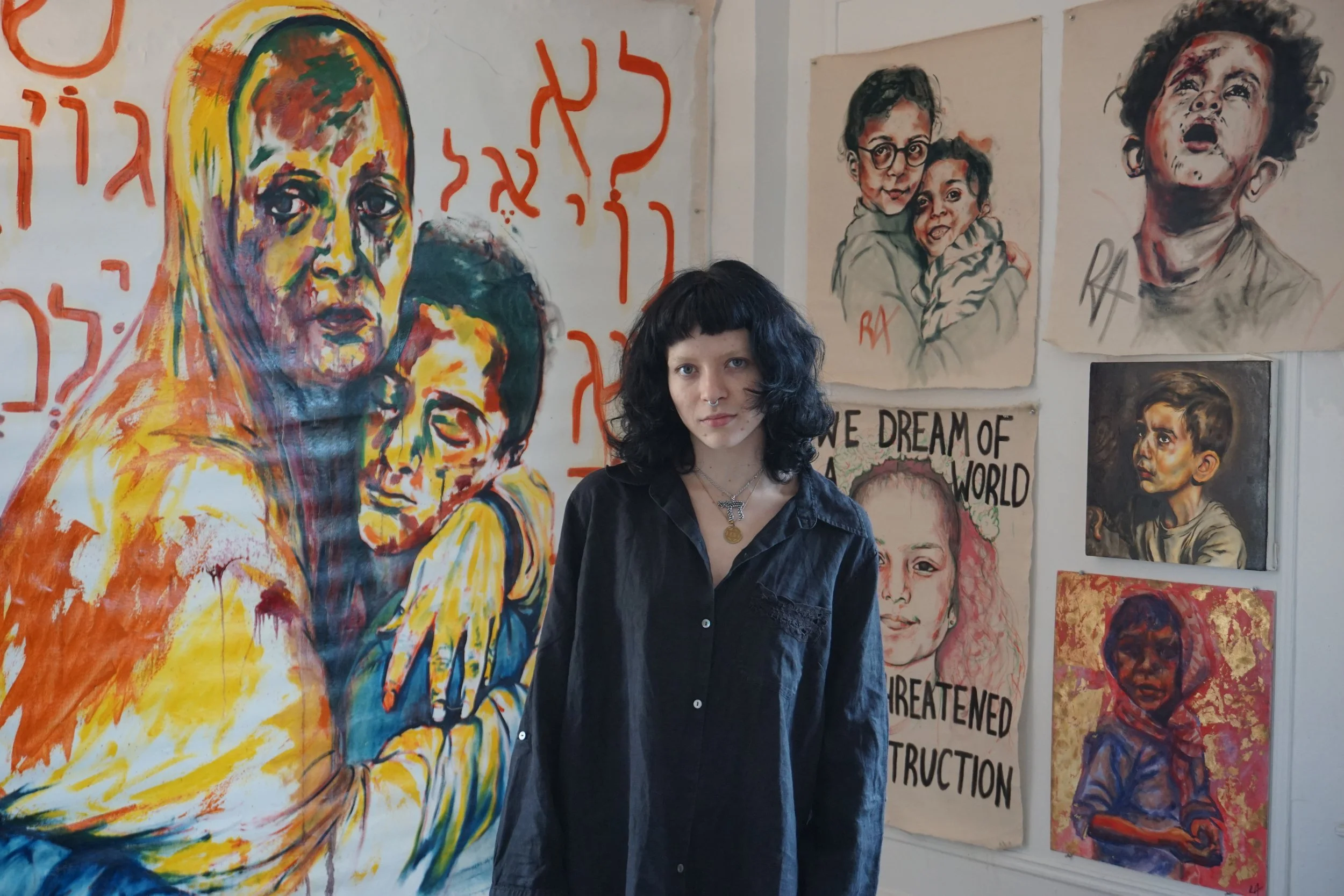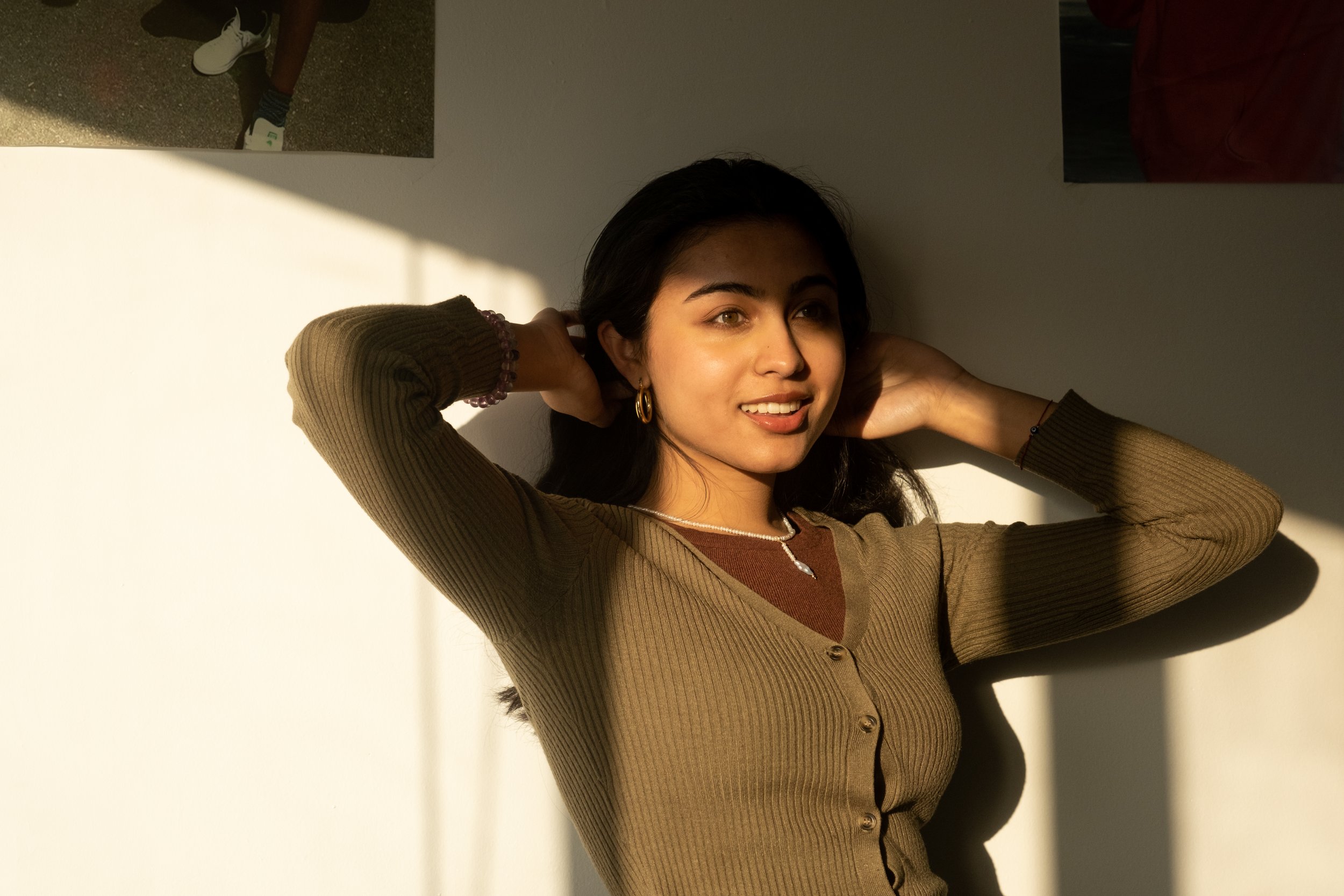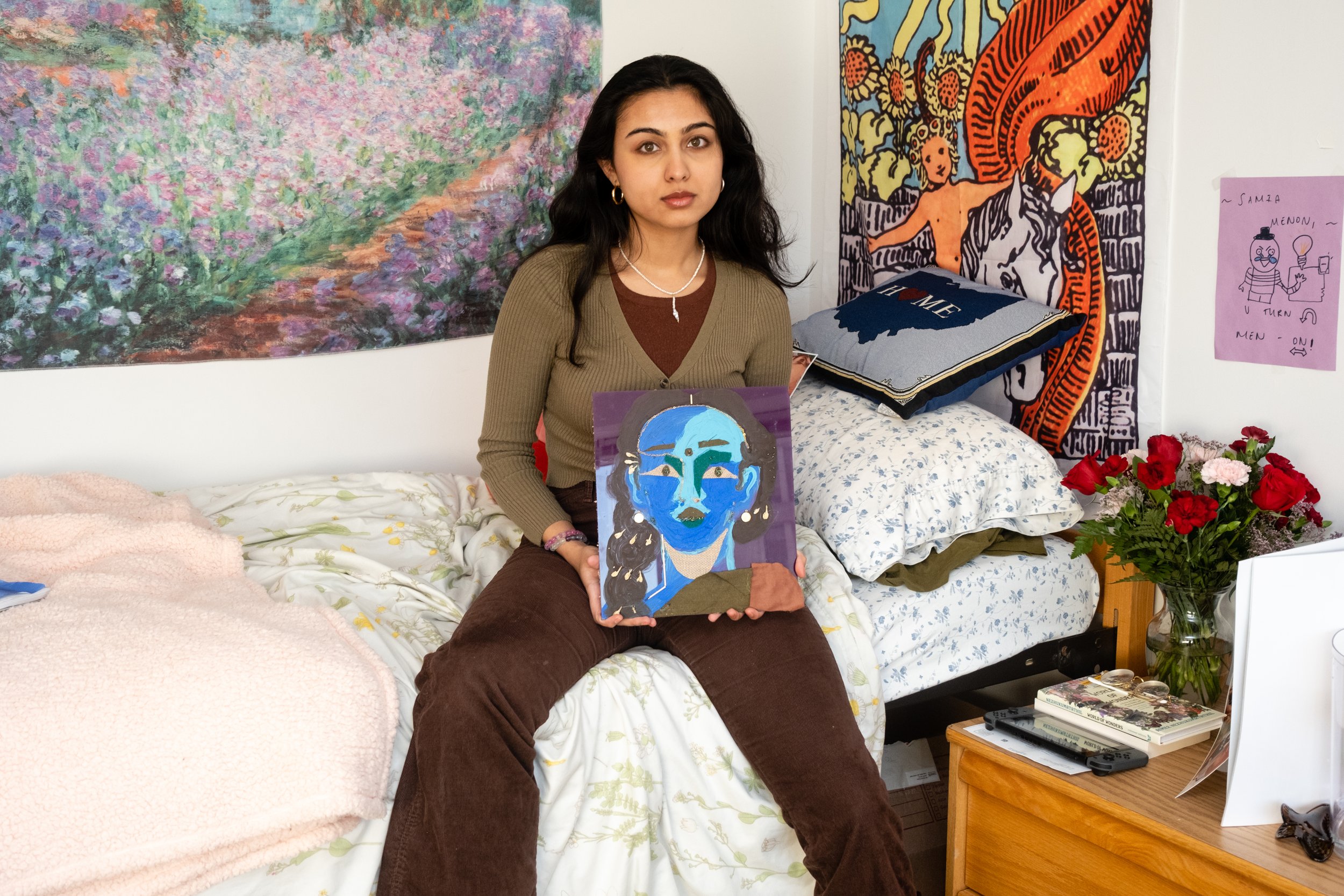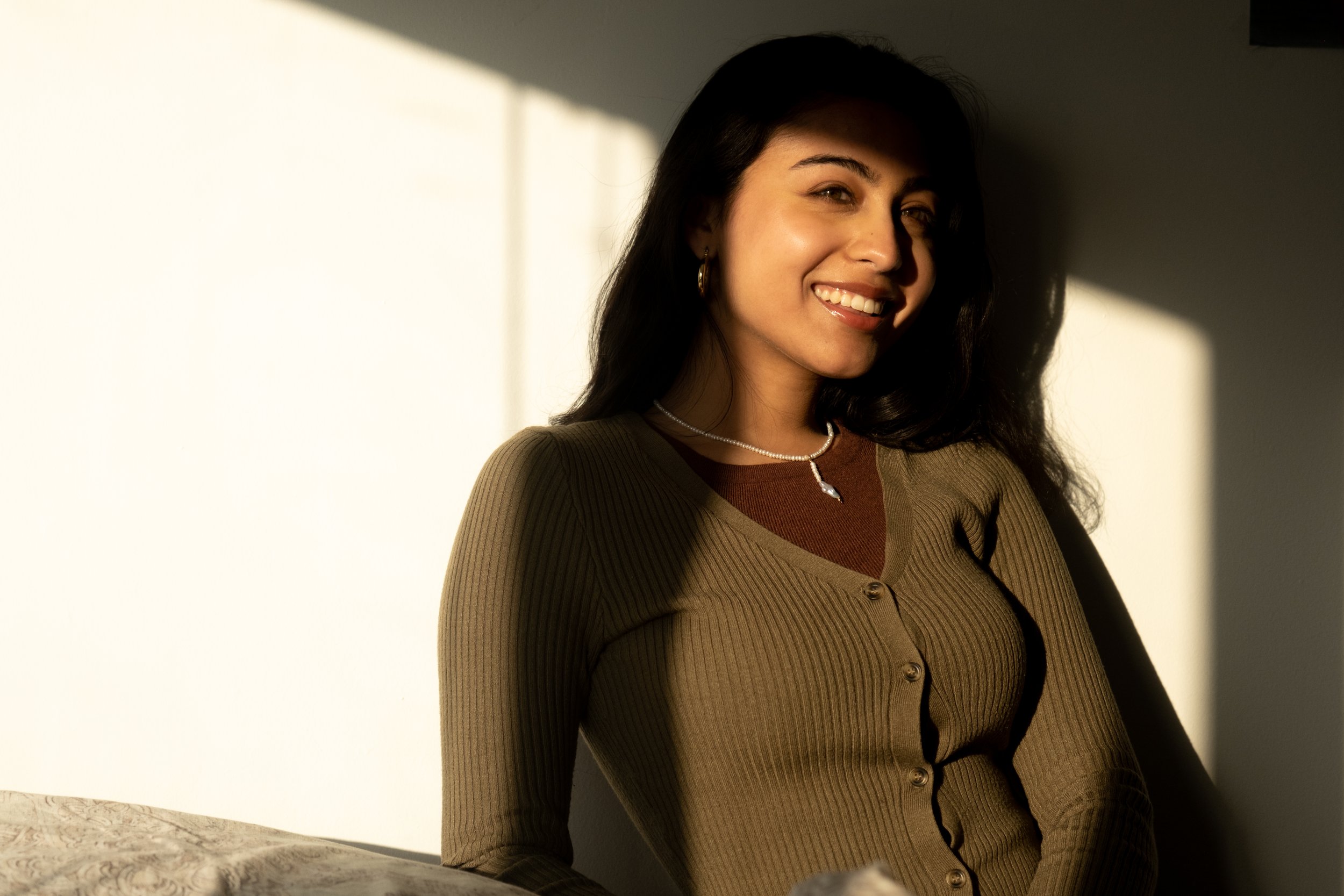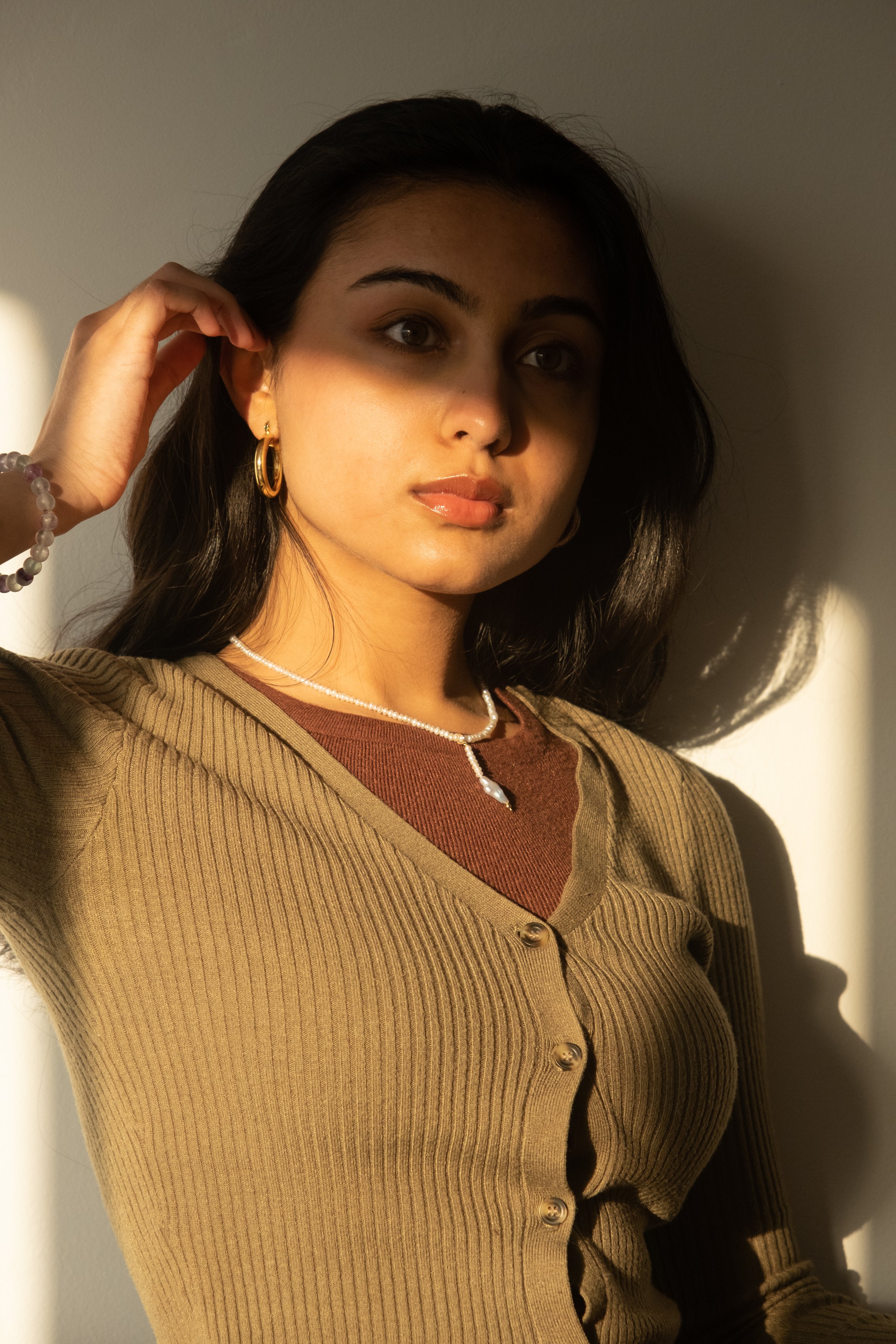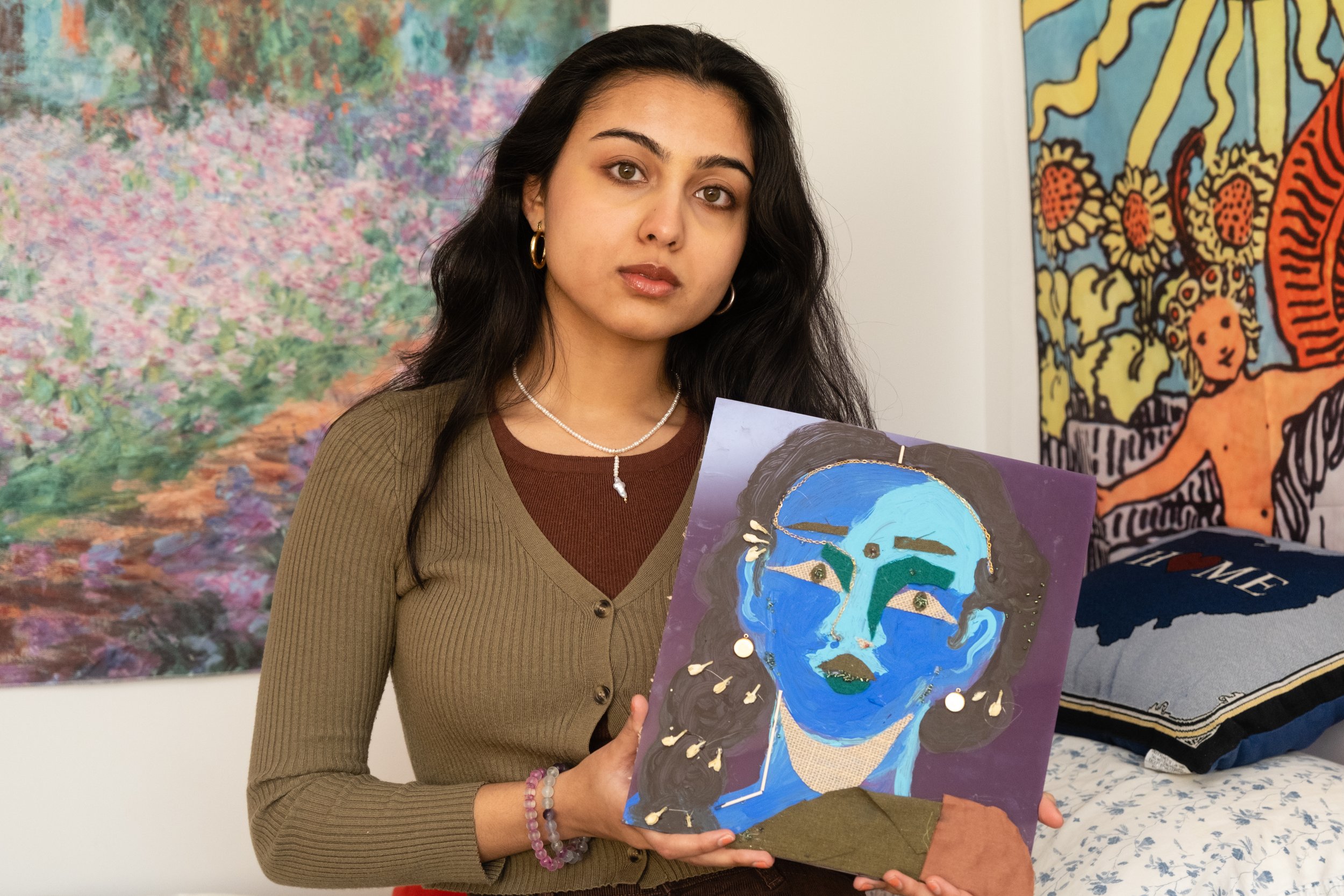Feature by Mel Wang
Photos by Caitlin Buckley
Samia Menon is a junior majoring in Computer Science and minoring in Anthropology at Columbia University’s School of Engineering and Applied Science (SEAS). Hailing from the beautiful Cleveland, Ohio (“a shimmering jewel of the Midwest,” as she so aptly describes it), Samia creates art that focuses on the intersection of technology and humanity. Her work includes graphic illustrations, data visualizations, and interactive pieces.
“This isn’t an interview—it’s actually a commercial for Chef Mike’s Sub Shop,” says Samia Menon as I hit the record button. She says this matter-of-factly, with a face so deadpan that I question whether I should even bring out my interview questions. “Yeah, this is a hype scheme,” she explains. “I’m actually an undercover agent for Chef Mike, posing as a young artist at SEAS and trying to promote the Sub Shop by sitting for magazine interviews.”
It is this tongue-in-cheek sense of humor that characterizes all of Samia’s artwork. From her playful illustrations for The Blue & White magazine to her quirky coding projects (which include apps that can read your tarot cards and match you with the perfect plant), Samia is truly an artistic jack of all trades.
Samia, what led you to your major combination? (Computer Science major, Anthropology minor)
In a strange way, I’ve found myself becoming like Barbie in the sense that I enjoy experimenting with different fields. You know how there’s a Barbie doctor, a Barbie astronaut, a Barbie baker, a Barbie artist, blah? That’s who I want to be.
I also like tweaking technology to fit the needs of people. In a world that’s continuously improving its technology, I believe it’s important to have people in tech who care about the people they’re making the technology for. In the world of tech, it’s really easy to forget the human side of things, but I think you can tell amazing stories from data - yield migration, gentrification, redlining, it’s all data that represents the human story. I figured that if I could use my computer science skills to do good by people, then that’s a life well spent.
Created in Processing, COVID-19 "Painting" is a program that uses the death rates of different ethnic groups to produce a ‘painting’ that visually depicts the data, creating an engaging story solely through data
The tagline on your website is “tech w/ humanity.” What does that mean to you?
It’s my motto when I’m coding, really. The tech world is a manipulative one—even in my computer science classes, we’re learning about ways to use tech to manipulate people and turn a profit on them. I find that very strange. I know that we’re living in a late stage, capitalist era, but we shouldn’t lose sight of why we work in tech, which is to make people’s lives better.
Does this focus on humanity also apply to your non-coding projects, like your illustrations for The Blue and White?
Yes it does! I was illustration editor last year for The Blue and White, and it was such an honor to work with so many talented illustrators. When working on editorial illustrations, I was trying to visually depict the human side of our articles. With any illustration, I start by wondering how I want a viewer to feel when they see my work. I usually want to grab their attention with colors, which is where a lot of my influences (old Cartoon Network shows, Studio Ghibli movies) come in, because I’m obsessed with using color and movement in my work.
Could you talk more about your influences?
Well, they’re not high brow, art museum influences, but sure! I grew up on a steady diet of Cartoon Network, pop culture—basically anything that was made for kids, I fell in love with and used in my own work. I really liked the art style of the TinTin comics growing up, along with Asterix, oh, and a really good Cleveland-based graphic novel called Paper Girls. And video games! I was a big Pokemon fan - gotta catch ‘em all! And Street Fighter, and Undertale, and—god, I could go on, but I just think there’s something really miraculous in a clump of colorful pixels telling a story.
Did you fall in love with video games for their stories?
100% yes. Even with simpler games like Pokemon and Street Fighter, the player still has a main goal. And that’s the computer science part of it - you’re making these characters, making these worlds, out of pixels and code, and they all come together to tell a pretty awesome story.
What’s more important in your work - story or aesthetics?
So you know how you’ve just finished watching a movie, but you haven’t processed it yet? Or you finished a video game, and then you see the end credits play? I don’t know about you, but I get this sense of numbness, like I’m still working through what I’ve achieved. It’s that little gap between going through an awesome story and understanding it, and that gap is just a jumble of visuals and narrative. I want to make art that exists in that gap. Art that smorgasbords aesthetics and storytelling into one big, impressive piece that you can’t stop thinking about.
Do you prefer small or big projects?
So right now, I’m only capable of really tiny things. The goal is to make projects that belong in the MIT Media Lab - just big room-sized interactive projects that rope the viewer into a story they can’t get out of. For example, with my Koi coding project, where it’s a bunch of koi fish swimming on your screen - I want to expand that to have an entire room of koi swimming in a sine wave pattern, and I want people to come into the room and feel like they’re sitting at the bottom of a koi pond.
Koi by Samia Menon
So existing in that little gap - is that something you want to pursue after you graduate?
Yeah, definitely. The plan is to work for a nice software engineering company that’s ethical - emphasis on ethical! Eventually, I’d like to start my own fully ethical company and hopefully put out projects and products that combine technology and anthropology. And then maybe grad school, combined with making more art that combines computer science and humanity. Big dreams.
I think you’re already doing so much in terms of combining product and ethics - especially with your current project, Rayn Naturals!
Oh wow, you found that! That project’s on a roller coaster right now, but you’re right in that it’s a product that focuses on the human side of things. Rayn Naturals is an eco-friendly invention of mine that I started working on when I was a freshman. It stemmed from the cockroaches populating my residence hall — they just kept coming back to our shower. So I thought, this is silly, let’s fix this. My friends and I read a bunch of papers online and found out that essential oils are really effective in shooing away cockroaches without hurting them, so we designed a drain cover that you can use in your shower or in your kitchen sink to ward them off ethically. I don’t normally work on product design, and I have more experience working on coding projects or illustrations—but I learned a lot from working on Rayn Naturals, and I’m proud that we made a product that’s humane and ethical.
Rayn Naturals, 2021
So we’re winding down our interview here - what’s next for you, Samia?
I’m not sure, really—it feels like there’s so much to do! I think I’ll be working on existing in that little gap like we talked about and working on my skills from there.
Where can people find your work?
My website portfolio is bysamiam.com, a lot of my work can be found on The Blue and White website, and my instagram is @samia_mnn.




